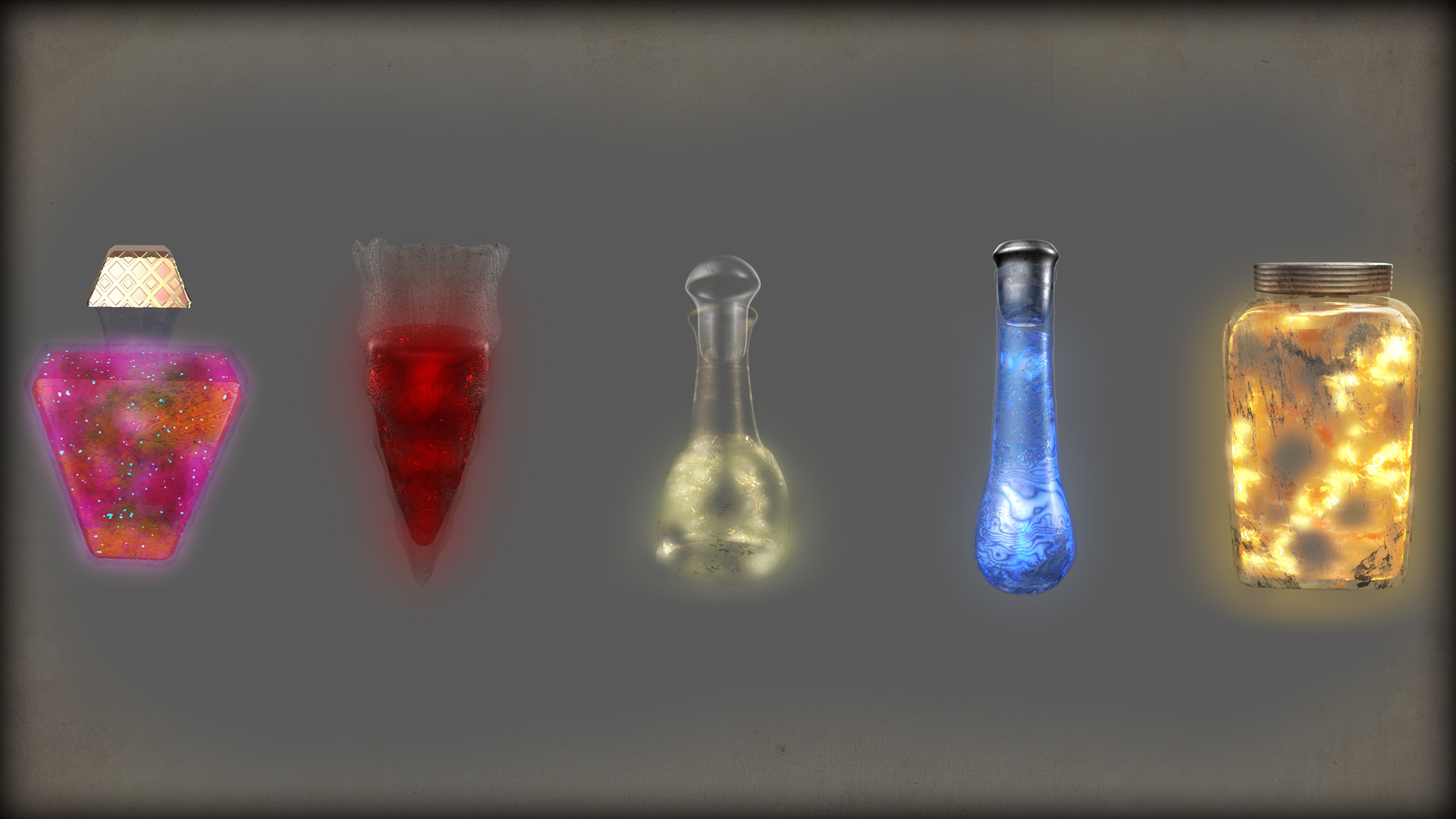Healing and Curative Potions
Can you imagine what it must have been like to live in a world where a few sips of some mysterious brew can cure whatever ails ya? They didn't even know how good they had it back then.
During the height of Tairos' golden age of magic the talent to create simple healing potions was in abundance. Only the most isolated and barbaric of communities lacked the capacity to create these wonders. That is not to say they were ever plentiful. Even before the Queen's Rebuke a well stocked army may only have a few dozen of them in stock and to be used only in the most dire of situations. Magical spells and traditional medicine were the first line of defense against wounds and ailments even then. However, it was the profession of many a skilled magician to craft healing poultices day and night to be sold adventurers, armies, nobles and those able to scrape together enough coin to afford one.
The method for creating healing potions is as varied as the nations that concocted them. The Balmoran variant was the most wildly known and used. They were often created by the priestly adepts of the church of Sandor from a mixture of blessed oils, sanctified waters and the early morning dew drops which were said to be sacred to their god. They made these potions in large quantities and always made sure their infirmaries, soldiers and outposts were well stocked should a disaster arise. This is why most potions surviving today are the glittering blue variety from the old Balmoran Kingdom. The dwarves of Ghal Ankhar were also prolific makers of such potions though their version was a much thicker, brown, syrup that many other races found difficult to draw from the bottle with their lips and harder to stomach. The taste was said to be a bitter combination of mushrooms, earth and fermented grains. The more exotic types came from the Gnomish Empire of Carda which were said to be more like tiny grains of sparkling gold powder that could be added to water or the totemic blood ales made by Frostmerites gothi. Baradradi healing oils are carefully distilled from small samples of life-energy siphoned from willing donors and fused with special funerary dressings. This is perhaps why many outside Baradrad are reluctant to make use of it. Rarest of all are the elixirs made in Melanthris for the high elves of the First City are loathe to share even such a simple magical trinket but the taste has become the stuff of legends. It's said to be a wine-like drink flavored by honey, wine, flowers and mint.
It is also well known that the more sinister kingdoms possess their own versions of healing potions as well. The Locklander elite use shimmering blue versions almost identical to those of Balmoral save for the fact that they're created by the hands enslaved magicians. Duergarians rely fiery embers kept within sealed brass jars said to be the distilled essence of lesser demons. Orcs prefer muddy pastes made from the ground up organs of worthy foes and pithy dirt from their homeland. Kobolds and Goblins are happy with whatever they can steal and the Sahuagin shun all forms of healing other than the natural regeneration their bodies offer.
Today, healing potions of any sort are a rare thing to find. Potions created before the Queen's Rebuke are few and far between. The storehouses of the old College of Magic are ideal places to find them assuming others have not picked them clean by now. In the ruins of Balmoral there are said to be a surplus of such wares but more often than not the dangers outweigh the benefit of venturing into that cursed place. Only the Tengu and Locklanders are actually making new potions regularly. The Tengu use their synthetic Manacite and alchemic mastery while in Lockland they're made in a factory setting by slaves.
It's not a lack of knowledge that prevents them from being made en mass by other cities but deficient of useful mana actually make the magic work. Thanks to the devastating impact of the Rebuke the means to create enchanted items has withered just as it has for casting spells. Without the mana of the Leylines another fuel is required. For most, that is manacite. It becomes the source by which the magic us undertaken and it is added to the mixture as well to ensure the effort is long lasting. The consequences for trying to make healing potions without manacite are well known to many apothecaries and sages. Baradradi elixirs are said briefly allow the recipient to see between the veil of life and death in some small way. The manacite created by the Tengu is believed to be toxic after long-term exposure and rumored to even cause mutation. In Lockland they forego the safety offered by manacite and force their enslaved mages to create such items while suffering the ravages of the Rebuke in full.
Significance
Today, these are highly sought after items that have the ability to save the lives of those traditional medicine cannot
Item type
Medical
Rarity
Very common prior to the The Queen's Rebuke but in modern Tairos they are extremely rare.
Raw materials & Components
Manacite is required in the create of healing potions because of the effects of the Queen's Rebuke. Without manacite additives the potion will quickly expire after a few days(perhaps a few weeks with costly and careful preparation). Other than manacite recipes will vary by nation, race and individual preference




Comments